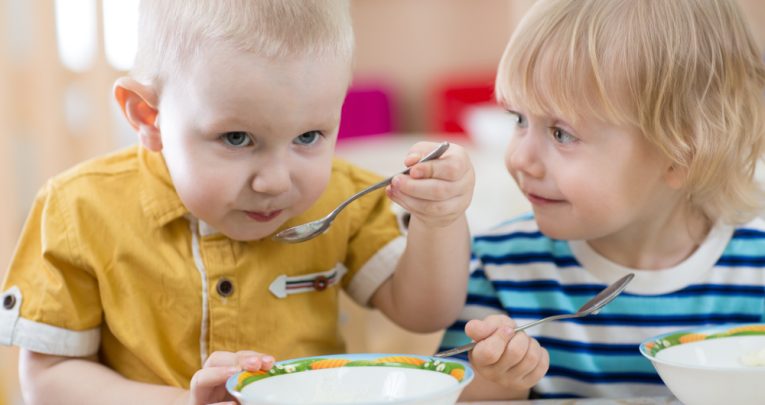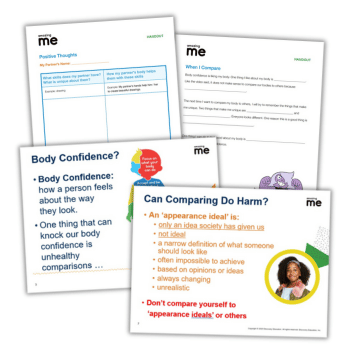Encouraging Good Eating Habits Can Have Benefits That Last A Lifetime, So It’s Never Too Early To Start

Fussy eating is a normal part of early childhood, and by being a positive role model you can ensure it doesn’t become a problem

If I had a penny for every conversation I’ve had with an early years professional about a particular child’s fussy eating, I wouldn’t be sitting here writing this article.
For parents, and those who look after young children, mealtimes can be a source of worry and frustration. Lips are pursed, meals are refused and nerves are shredded as a result. Having recently become a parent myself, I’m only too aware of the ‘joys’ of feeding a small person, and as a dietitian I have come face to face with the harsh reality of trying to follow my own good advice in the face of wanton rebellion!
However, with unacceptable levels of childhood obesity (one in five children start primary school overweight or obese (PHE)) and oral health remaining a key national health priority (an estimated 166,467 five-year-olds suffer from tooth decay (PHE Oral health survey 2016)), it’s clear that we need to pull out the stops to ensure that our future generation is given the best start to life.
Normal behaviour
What is considered ‘normal’ when it comes to toddler eating patterns? The way I like to describe it is if you take the ‘odd’ out of toddler, you’ve got a pretty accurate description. Some days they may eat well and with gusto, relishing everything put in front of them.
Other days you will see your perfectly balanced meal swept onto the floor with a theatrical flourish! It can be anything from teething to tiredness, a temperature to too-tight trousers, a valid dislike, boredom or the genuine belief that you are trying to poison them. Frustrating, yes, but also slightly reassuring, I find. I have to remind myself on a daily basis that toddlers eat erratically from one day to the next, and that this is actually pretty normal.
A diet viewed over the course of a week is likely to be more than adequate, as opposed to if we just examine the last meal eaten, and in most cases few children come to any nutritional harm in the long run.
It is also quite normal around the 18-month mark for toddlers to develop ‘neophobia’ – a fear of new things. When it comes to food, this can manifest itself as revulsion or disgust of new or even previously enjoyed food. However, now that spaghetti ‘looks like worms’ it’s actually quite a rational response when you think about it, and merely a reflection of their increased cognitive development and greater understanding of the world.
How to respond
So how does one cope when neophobia or selective ‘fussy’ eating strikes? Well, with empathy basically. Try to see the situation through the eyes of the child. They need to learn (again) that these foods are safe and enjoyable to eat. And the best way to do this is for them to watch their key role models (ie you) eat and enjoy the same food.
Over time, and with patience, refused food will be accepted. This is also where it helps to remain really calm, count to 10 and leave the room if frustration threatens to get the better of you.
Toddlers around this age also start to use food as a means of exerting an element of control over their lives, and for them, any attention as a result – whether good or bad – is usually considered a good thing.
Strategies that can be quite helpful in this situation include ignoring the less desirable behaviours and praising those you want to promote, be it using a fork or spoon, drinking from a cup or beaker, or trying a new food.
Giving children a choice between limited options can also foster a sense of empowerment, for example, asking, “Would you like banana or grapes with your yoghurt?”
Stay patient
Young children eat very slowly (unlike most adults) and when you’re busy it’s easy to create tension around mealtimes rather than allowing the child to take their time – they are learning new skills after all, so stay patient.
By allowing children to eat slowly you are also strengthening their in-built ability to stop eating when they are full and avoid overeating. Being responsive and paying attention to a toddler’s fullness cues (eg being easily distracted or turning their head away) will guide you towards a better understanding of their portion requirements.
It is worth remembering that a child’s stomach is roughly the size of their fist, so a sufficient portion may be much smaller than you expect. Putting a small amount in their bowl initially and allowing them the satisfaction of eating everything is much better than trying to force them to finish everything on their plate. They can always have extra if they are still hungry!
Alternatively as they get older, it’s good to encourage children to self-serve; not only are they learning new skills but it is good for their self-esteem and social development.
Eating the same food together in a relaxed, bright, clean environment, free from distractions and taking an interest in what they are eating (the colours/ textures/smells, etc.) will all help young children to eat well.
Providing a range of nutritious foods from the four main food groups over three meals and two to three snacks will allow young children to eat little and often and according to their appetite, and allow for fluctuations in intake that result from the normal erratic eating patterns of the typical toddler.
Nine ways to overcome fussy eating
| 1. | Try to remain calm if a meal is refused or if a couple of days pass with little food being eaten. |
| 2. | Persevere and offer disliked foods on many occasions; it can take 15 or more exposures before a food is accepted. |
| 3. | Don’t offer an alternative if a meal is refused. Try to ensure there’s some part of the meal you know the child will enjoy. |
| 4. | Offer food when the child is hungry (but not starving) and avoid ‘grazing’. |
| 5. | Never focus on one particular child’s eating habits, and make sure children don’t overhear you talking about them. |
| 6. | Remove uneaten food without comment. |
| 7. | Never ban sweet foods or use them as bribery. |
| 8. | Gentle encouragement to try something new without any pressure, bribery or fear of punishment or judgement (even just to touch it or lick it in the first instance) is particularly helpful. |
| 9. | Never make any negative comments about your body shape/size or a child’s body shape/size. |
Enabling environments
Lay the foundations for stress-free mealtimes…
- Have a designated area for meals and snacks with appropriately sized tables, chairs and cutlery.
- A good mealtime routine is helpful, eg lay table, wash hands, sit down, bibs on, etc. Singing songs can help children know what to expect next.
- Having a setting-wide approach to managing fussy eating is essential. This should be included in your setting’s food policy.
Lindsay Gilbert is a paediatric dietitian and joint director of Foodtalk.
Need more help? The Foodtalk Game helps practitioners understand how to manage selective eating, create a positive mealtime experience and promote good eating habits in early years settings. It is available from foodtalkgame.co.uk priced £60.
Browse resource ideas for Healthy Eating Week.











